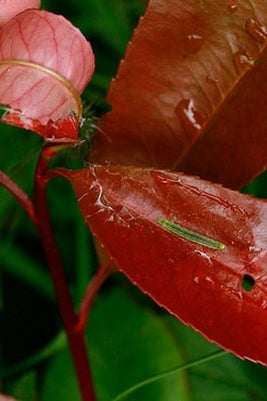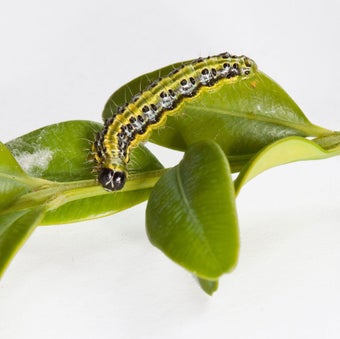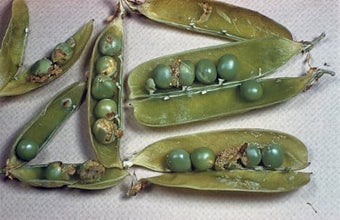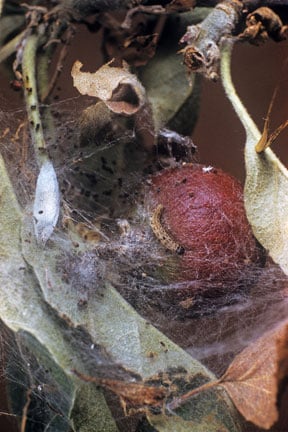
Quick facts
Common names - Carnation tortrix and light brown apple moths
Scientific names - Cacoecimorpha pronubana and Epiphyas postvittana
Plants affected - Many edible and ornamental plants both indoors and outdoors
Main symptoms - Caterpillars feed within leaves bound together with silken threads
Most active - April to September but all year round in glasshouses
What are tortrix moth caterpillars?
These small green caterpillars are the larval stage of moths belonging to a family called tortrix moths (Tortricidae). There are almost 400 species of tortrix moth in Britain, several species can be found in gardens, most causing no serious damage to plants, and so should be treated as part of the a healthy garden supports. Two species can however, can feed on a wide range of plants and the leaf rolling and defoliation they cause in gardens and glasshouses often gets noticed; the carnation tortrix moth (Cacoecimorpha pronubana) and light brown apple moth (Epiphyas postvittana).
A gallery of adult tortrix moths found in Britain can be found at UKmoths.
Symptoms
The caterpillars of carnation tortrix and light brown apple moth bind leaves together with silky threads and feed within this shelter causing damaged areas to dry up and turn brown. Fruit and flowers can also be damaged. In glasshouses damage can occur year round.

Management
Caterpillars form the basis of many food chains and it is not unusual to have some of these animals in a healthy balanced garden ecosystem. They are an important source of food for other garden wildlife and the adults are pollinating insects. Low levels of damage can be tolerated without adverse effects on plant health.
- Where possible tolerate damage, particularly in the garden
- Encourage predators and other natural enemies in the garden such as birds, wasps and ground beetles
- Check susceptible plants frequently to prevent a damaging population developing
- Light populations can be managed by squeezing the bound leaves to crush the concealed caterpillars and pupae
- Carnation tortrix and light brown apple moths can be monitored and may be kept in check by using pheromone traps. These consist of an open-sided cardboard box with a sticky sheet in its base. A pellet which releases a pheromone is placed on the sheet; this is the same chemical produced by females to attract males. In a confined space, such as a glasshouse, the traps may capture enough males to reduce the mating success of the females. These traps are available from some suppliers of biological controls
Biology
Out of doors light brown apple moth has two overlapping generations during the spring and summer. Eggs are laid in batches on the leaves of host plants and hatch after about ten days. The caterpillars then feed with foliage sown together with silken threads and pupae where they have been feeding. In glasshouses and on houseplants the lifecycle can vary, with adults and caterpillars active from late winter until late autumn.
Carnation tortrix moth has a similar lifecycle to light brown apple moth but can breed continuously in glasshouses and on houseplants.












